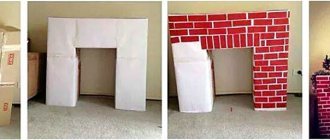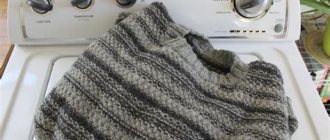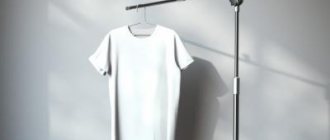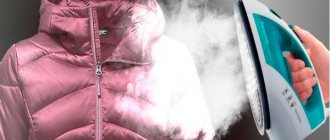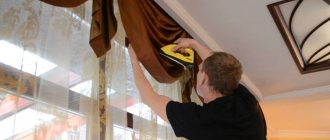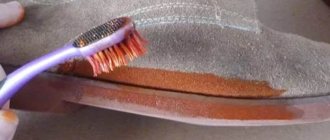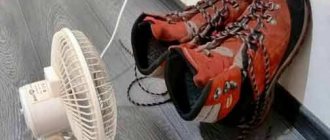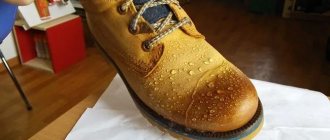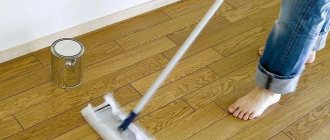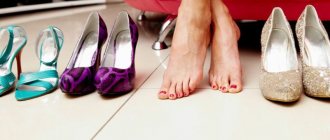Making cushions for a sofa with your own hands is an interesting and easy idea. Every housewife strives to create a cozy atmosphere in her home with the help of various decorative elements. For such purposes, pillows of unusual shapes are often used, because such products serve not only as decorations, but can also be used for their intended purpose.
They can be purchased at the store or made by yourself. If you choose the second option, you can experiment with the decor and create your own unique pillow. How to do this - read below.
DIY sofa pillows
Benefits of homemade pillows
If necessary, the craftsman has the opportunity to select an individual design, as well as use any fabric for the cover and decoration. In addition, the following advantages can be noted:
- A great hobby after a hard day.
- For girls, sewing is a good opportunity to practice basic sewing.
- When working on creating pillows, fine motor skills of the fingers develop well, and abstract and figurative thinking begins to form.
- Mothers and grandmothers can make baby pillows from natural materials with their own hands. Such accessories will allow your baby to maintain healthy sleep and good mood.
Thanks to the painstaking work of craftswomen, beautiful pillows (sofa, foot or floor models) will appear in the house.
Where to start preparing for sewing?
Decorative pillows for a sofa with your own hands can be made from completely different materials. In modern society there are absolutely no clear boundaries and rules in such handicrafts that should not be crossed.
You can choose either silk or velvet as the main fabric for the pillowcase; the main thing is to fit it stylistically into the interior of your home.
In order not to “overload” the room and avoid making mistakes when using extraordinary materials, it is best to use them in a single color, avoiding additional accessories.
The most ornate throw pillows today can be metallic, fur or leather.
In order not to create pillows for the sofa with your own hands using a master class from strangers, you need to be prepared to approach this issue.
As a result, this will give you a completely unexpected and exclusive result that will have no analogues.
Today there are several new techniques and technologies in fashion that will help you get this result. Ultimately, they can become your calling card for the design and decor of not only decorative pillows for the sofa with your own hands, but also other textiles in the house.
At the same time, it can fit not only into urban housing, but also into a dacha or country house, successfully emphasizing the design style of this residential place.
Don’t forget about directly decorating the newly sewn pillow. You can decorate it with various accessories, which do not necessarily have to be just purchased at a hardware store.
In addition to the actual fabric, they may contain knitted elements, embroidery of various techniques, beads, bugles, tassels, cords, ribbons, additional frills and ruffles, buttons, small toys, zippers.
All of them should be appropriate in the design of the sewn product and not interfere with rest or sleep, if the pillow has a direct purpose for this. Often such additional elements are used for strength and maintaining the correct shape.
The main stages of sewing a pillow
There are several steps to making a pillow with your own hands:
- Prepare all necessary tools and materials.
- Make a pattern.
- Sew all the pattern elements into a single product.
- Pillow filling.
- Final sewing of the pillow, installation of the zipper.
- Pillow decoration.
Filling
Sewing a pillowcase with your own hands is half the battle, because you still need to fill it with something. All fillers are divided into two types:
- natural (animal and plant origin);
- artificial.
Animal origin
Down, feathers, wool are natural fillers. Among the advantages:
- sanitary and hygienic properties;
- long duration;
- they don't crust over.
Materials for decorative pillows are practically not used, because they are not matted like sleeping pillows.
Vegetable origin
Suitable fillers growing from the ground include:
- buckwheat husk;
- bamboo;
- medicinal herbs;
- hop cones.
The materials require special care because they can become wet, rot, or rot, which can have a detrimental effect on your health. What else can you fill with handmade sofa cushions?
Artificial
Cotton, pieces of worn items, padding polyester used to make outerwear - these materials are not suitable because they can get tangled and come off in clumps. Among modern materials, it is worth noting synthetic down and holofiber. In terms of hygienic properties, they are similar to swan's down, but will last much less - 7-10 years. Another advantage of fillers is elasticity, which remains virtually unchanged over the years.
For children's clothing, you need a hypoallergenic material - silicone granules are great because they do not get wet. It’s not difficult to stuff a sofa pillow with your own hands - you need to leave a gap of 2-4 cm and just pour the filler there. Silicone beads are easy to clean by simply washing them by hand with water.
The artificial filler can be washed in a washing machine - it will be free of dust and become suitable for further use.
Ways to decorate decorative pillows
When creating a throw pillowcase, let your imagination run wild and explore all the decor you have. Many ideas have been invented for the manufacture of such products. Pillows are commonly used for:
- colored ribbons of various widths;
- yarn of different shades and textures;
- beads, beads, rhinestones, horns, sequins;
- cord;
- applications;
- embroidery;
- brushes, etc
What to stuff the product with?
After manufacturing, decorative pillowcases are filled with a special filler. The following characteristics are important for the composition:
- elasticity, ensuring reliable fixation of the shape, absence of deformation, restoration of volume;
- breathability: fillers and fabric must be breathable;
- hypoallergenic - raw material filling should not cause allergic reactions;
- ease of care: the pillow can be quickly washed even in an automatic washing machine.
The following are used as fillers:
- down and feather;
- cotton;
- natural yarn;
- plant components (dried herbs, buckwheat husks, barley, mint leaves, lemon balm, thyme, hop cones, dried herbs);
- cotton wool;
- padding polyester;
- holofiber;
- silicone granules.
Synthetic insulation is inexpensive, soft, porous, lightweight. However, experts recommend periodically replacing this filler.
Hollofiber is a non-woven material consisting of interwoven polyester fibers. The raw material retains heat, is lightweight, easy to use, holds its shape, is breathable and does not absorb moisture. Shelf life up to 5 years, machine washable.
Cotton is environmentally friendly and hypoallergenic. It is characterized by increased hygroscopicity, retains heat, prevents the formation of fungus, is comfortable and lasts a long time.
Old knitwear is used to stuff pillows. You can cut out the stuffing of sweaters, sweaters, and pants. Products are washed, dried, cut.
Natural yarn: You can use wool or cotton based material.
How to sew a pillow: diagrams and instructions
Standard pillows
Standard patterns are the simplest ones that don’t even require a pattern. Essentially, these are two squares of fabric that are simply sewn together. Usually everything is done by eye, including the amount of filler.
The instructions look like this step by step:
- Two squares of the same size are drawn on the fabric. This can be done using a prepared paper template.
- All three sides need to be sewn together. You can do this with a sewing machine or a small needle and thread.
- A filler of arbitrary density is introduced inside.
- The side is stitched.
If you plan to often use the pillow for sleeping or relaxing, you can sew in a zipper. This allows you to quickly remove the pillowcase for washing.
For decoration, you should buy toy eyes and ears at a craft store. These pillows will appeal to preschool and younger children.
Pillow bolsters
Bolsters, unlike square pillows, require just one piece of fabric and two side panels. The easiest way to make them is not with purchased fabric, but with an existing blank. Old jeans work best. You will be comfortable in pants and jeans, since they already have the desired shape and you do not need to resort to a sewing machine. If you don’t have old pants, you can use regular canvas. Because the padding must be dense, the seams must be strong and durable.
To always have access to the padding, you can make a tie at the end of the bra and stuff it like a punching bag. The heads are used as armrests and headrests.
Knitted pillow
How to make a pillow entirely with your own hands? For those who like to knit, you can make your own pillowcase. All you need is very strong, high-quality thread and some free time.
The advantage of such a pillow is the possibility of decoration. You can make the pillowcase white and dye it with special yarn dyes. They are washable and do not fade in the sun.
Latex filler can be used as a filler. Unlike synthetic down, it will not fit through the wide pores of the dressing.
A knitted pillow can be decorated as you wish. Including, you can make beautiful children's pillows and headboards.
Sofa toys pillows step by step
Owl pillow toy
What you will need:
- white and yellow fleece/felt;
- blue cotton fabric with polka dots;
- blue cotton fabric (plain or with a bright print);
- narrow blue ribbon;
- small black beads or buttons - 2 pcs.;
- a piece of openwork lace;
- pattern paper;
- pencil and chalk;
- pins;
- cutting knife;
- filler.
How to sew a toy pillow:
Step 1. Draw the owl pattern, enlarging it to the desired size.
Step 2. Cut out the patterns. We attach them to the fabric with tailor's pins. Mark the seam allowance with a dotted line; 1 cm is enough.
Step 3 Carefully cut out: two main parts of the toy pillow (body with head and ears) from blue fabric; four pieces for wings made of blue polka dot fabric; two white fleece mugs for eyes; one yellow fleece triangle for the owl's nose. In addition, you will need two parts for the bow: a rectangle and a square. We will cut them out of fabric with polka dots. Dimensions - optional, proportional to the size of the pillow.
Step 4. Iron all the details. We attach the eyes, beak, wings and lace strip to the owl’s body using a decorative “zigzag”. Using a glue gun, attach buttons or beads - the pupils of the bird.
Step 5. Place both parts of the body face to face. With pins. We will lay a regular stitch along the contours, with an indentation of 1 cm. We will leave a section of 3-4 cm (at the bottom, between the owl’s wings) unstitched, for filling the pillow. To ensure that there are no ties on the material, we will make notches on the ears and other convex areas of the toy.
Step 6. Turn the pillow inside out and straighten the corners. Let's iron it. Carefully and evenly fill with filler to the desired density. Let's check whether the ears and other protruding parts are well filled. Let's sew up the hole.
Step 7. Let's make a voluminous bow. Fold the square in half (you should get a wide strip) and iron it. Fold the rectangle face inward. Let's sew (with an allowance of 1 cm), turn it inside out, iron it, and gather it in the middle into a beautiful gathering. Secure with the prepared strip.
Step 8. Attach the bow to the owl's ear. We will glue another decorative bow, made from ribbon, onto the owl’s body, above the lace.
Pillow-toy “Cat”
What to prepare:
- cotton fabric the color of baked milk (with a soft print);
- plain cotton fabric - pink and dark beige;
- brown fleece;
- dublerin/non-woven fabric;
- dark brown buttons - 2 pcs.;
- pattern paper;
- chalk or thin marker;
- brown floss;
- tailor's pins;
- iron.
How to sew a toy pillow:
Step 1. Download the pattern. If necessary, we will increase it to the required parameters. Carefully cut out all the elements of the drawing.
Step 2. Lay out the paper parts of the toy on the fabric. Attach with tailor's pins. Mark a 1 cm seam allowance with a dotted line.
Step 3. Sequentially cut out from cotton fabric the color of baked milk: one half of the kitten’s body; four parts for the front legs; two parts for the tail. From brown fleece: the second half of the body; four parts for the rear legs. Made from pink cotton fabric: four pieces for the cat's ears. Let's make a decorative heart from light beige cotton.
Step 4. To make the pillow-toy durable and last longer, we seal the parts of the body with double rubber. To do this, place the cut out elements inside out on the adhesive side of the dublerin. Secure with tailor's pins. Let's cut exactly along the contour. We will remove the pins.
Step 5. Fold the parts of the cat’s body made of fabric and dublerin in pairs. Iron them thoroughly so that they stick together completely. Glue or sew a heart on the front part with a decorative zigzag.
Step 6. Fold the blanks of the cat’s ears, tail, and paws in pairs (facing one another). Let's lay the lines along the contours. Leave small holes for filling. Along the edge, use curly (or regular) scissors to make frequent notches or teeth.
Step 7. Turn the sewn parts inside out, straighten all the corners and protruding parts, and iron them. Fill evenly and tightly with filler. We attach them with pins to the front (cotton) part of the body. Sew with a zigzag stitch twice. Using chalk or a thin marker, draw the cat's face.
Step 8. Place the fleece back of the cat on top. Align, secure with pins or baste. Let's sew a line along the contour, connecting all the elements. To stuff and turn the toy inside out, leave a small unstitched area between the hind legs.
Step 9. Turn the toy pillow right side out. Let's iron it. Distribute the filler evenly and tightly inside. Let's sew up the hole.
Step 10. Let's finish the job. We sew the front legs by hand. We decorate them with buttons.
Step 11. We beautifully embroider the details of the face on the finished children's pillow “Cat” with brown floss.
Original decorative pillow “Knot”
What you will need:
- elastic knitted fabric with beautiful patterns or plain;
- cardboard tube from foil or paper towels;
- a thick knitting needle or similar device;
- filler (preferably synthetic winterizer);
- glue gun/textile glue;
- ruler;
- chalk;
- scissors.
How to make a beautiful knot pillow:
Step 1. Cut the knitwear into strips. The optimal width is 17 cm, length is 2 m. If the length of the fabric is shorter, we will connect the strips with a glue gun or fabric glue.
Step 2. Let's make knitted blanks for voluminous tubes. Place each strip of fabric wrong side up. Apply glue along one of the sides along the length. Fold the strip in half and quickly fasten the sides together. Let's smooth out the unevenness.
Step 3. Turn out the glued blanks. This is easy to do using a cardboard tube. We will pull one end of the fabric through the tube, turn it inside out on the opposite side, and put it on the tube. Stretch and gather the fabric into a tight gather, turn it right side out. There is no need to remove it from the cardboard tube.
Step 4. Fill the blanks with padding polyester. To do this, place the filler inside the tube. Using a knitting needle or other suitable object, push the padding polyester into the knitted piece and press it lightly. Distribute the filler evenly.
Step 5. We will tie a beautiful voluminous knot from the resulting soft tubes. This is convenient to do on the floor. Place two blanks (you need knitted tubes 2 m long) perpendicularly, crosswise.
Step 6. Alternately bend the ends of the knitted tubes with a loose loop in the following order: first - the top one, then - the left, bottom and right. We will pass the right one from above into the first loop (the one that was formed when bending the upper end of the fabric tube). Carefully tighten the knot.
Step 7. At the next stage, we perform the same actions almost in reverse order. First, just as before, we will make a loop from the upper end of the tube, then from the right, lower and left. We will pass the left end into the first loop. Let's tighten it and straighten it beautifully.
Step 8. Let’s finish the job by repeating the steps we performed in step six. It is more convenient to tighten the finished knot from the wrong side. Carefully straighten the loops. We fix the edges of the tubes inside the pillow or, for reliability, sew them on.
Sweater pillow - cloud
A good idea for a DIY pillow is to sew an unwanted sweater. This decorative soft cloud pillow looks original and does not require any special skills or sewing skills. To create you will need: a sweater, a pattern, a pencil, sewing accessories, filler.
Draw a cloud on paper, cut it out, turn the sweater inside out, and use pins to stick on the cloud template. Trace the template over the fabric, taking into account a margin of about 6-8 mm, cut out 2 blanks.
Carefully sew the patterns, but leave about 10 cm unstitched. Turn the fabric inside out, stuff the pillow well with stuffing, and sew the rest with hidden seams.
At your discretion, you can use buttons and threads to make a cloud of eyes, nose and mouth.
Cushion sizes
There are no special requirements for the size of sofa cushions. Select them in accordance with their purpose, your vision, desire, room interior style and furniture size. The larger they are, the larger and more noticeable decorative pillows can be.
If we talk about classic square and rectangular decorative pillows, then the standard ones - 40 x 40 cm, 40 x 45 cm, 45 x 45 cm - will look best on spacious soft sofas, beds and armchairs.
Furniture with hard metal and wooden backs can be made more comfortable with the help of large pillows - for example, 50 x 50 cm, 60 x 60 cm or 50 x 70 cm, and volumetric bolsters. They can be sewn from durable curtain fabric, velor or vinyl.
Small decorative pillows are well suited to compact home furniture - small sofas, couches, armchairs, ottomans: 30 x 30 cm; 35 x 30 cm, 30 x 20 cm, as well as not too long and voluminous cushion cushions.
Nuances you need to know
Before you start sewing a pillow, you need to stock up on all the necessary materials. For this kind of creativity, in addition to fabrics, it is worth preparing pieces of fur, leather or suede trim. Felt, fleece and felt can also be used in decoration.
When working on a pattern, keep in mind that placing filler will lead to a significant reduction in the size of the finished product. Therefore, it is recommended to add 3-4 cm on each side to the selected parameters. Also, don't forget about seam allowances.
There is nothing difficult about making a simple pillow configuration. You will need a rectangular piece of thick fabric measuring 128*63cm, you need to sew 3 sides completely and 1, not all. Then the workpiece must be turned over, filled with putty, and the area that remains unsewn must be sewn up by hand.
After acquiring the skills to create accessories for sofas with your own hands, you can move on to mastering the sewing of decorative covers. Its cutting is simple and quick, since its dimensions coincide with the manufactured pillows.
Knitted sofa pillow, diagram with description
Set of knitted sofa cushions
What to prepare:
- yarn (acrylic/wool blend 80 m/50 g) - apricot, vanilla, terracotta 250 g each;
- ready-made sofa pillows - 3 pcs. (two square and round, corresponding sizes);
- standard knitting needles No. 4, No. 5;
- circular knitting needles No. 5;
- "zippers" - 3 pcs. (L - 40 cm).
The approximate yarn consumption is calculated for sofa cushions of the following sizes: square - L - 40 cm, B - 40 cm; round – D – 40 cm.
Knitting patterns:
Ornament No. 1
Ornament No. 2
Sequence of work:
Knitted
Once again I am convinced that knitting is a very useful skill. If you plan to knit or crochet for a long time, winter is the best time to start learning. And don't think this is an extremely difficult stitch, you can do it!
These are knitted If braids and cornrows don't look good on you, don't be mad. Take sectional yarn - the products turn out interesting, and it is better to knit it with stockinette stitch, which is what all beginners start with.
If you don’t know how to knit patterns, take sectional yarn. Still, from a practical point of view, I like crocheted covers better - they hold their shape better.
All this beauty is crocheted. Pillows crocheted with voluminous patterns look great. Despite the beautiful appearance, mastering the technique is not difficult!
Volumetric patterns are beautiful! Round pillows look very cozy and encourage sleep. The model on the right is my favorite from this collection. How sweet, gentle, elegant. Bravo to the author of the idea!
If you don't like angles And another very comfortable type of pillow is a bolster. If you don't have it yet, be sure to do it, you won't regret it.
Very comfortable cylindrical pillows
Crochet sofa pillow, diagram with description
Decorative pillow-cushion
Crocheting this colorful cushion pillow seems difficult only at first glance. Even inexperienced needlewomen can make it in just a couple of free evenings according to the scheme. You will need only three parts (one rectangular and two round), multi-colored decorative “bumps” and high-quality, fairly elastic filler.
Scheme of the main blade for the cylinder:
How to knit:
Diagram of the side elements of the roller
How to knit:
Pillow assembly sequence:
Preparing patterns
Today, on various Internet resources and practical sewing magazines, you can find a wide variety of sewing patterns for pillows of all sizes and shapes. But if desired, the master can independently think through the future design of the accessory.
In this case, the drawing must show the dimensions, main details of the future roof, the presence of auxiliary elements (inserts, modules).
Materials: filling and upholstery
Any modular pillow consists of filling and upholstery. The filler is the basis of the module; the upholstery covers the structure, giving it a holistic look.
To ensure that the pillow is elastic, but at the same time not too hard, manufacturers use a special material that forms a module. The following is used as a filler for the volumetric module:
- springs of dependent and independent types (designs with springs in horizontal and vertical positions, connected and not connected to each other);
- polyurethane foam (a budget elastic filler that looks like a sponge in sheet form of different thicknesses);
- a combined “sandwich” of several layers of polyurethane foam or a duo of a spring block and foam rubber;
- artificial latex (durable and expensive material that can withstand heavy loads without loss of quality);
- natural latex (the most expensive and durable material, often a combined version with the addition of coir to obtain an orthopedic effect).
Each type of filler is designed for a certain weight and service life, so if there is a question about changing pillows, you need to take into account the purpose of the furniture.
Spring options are interesting because they can be of a connected design or an independent type, when each spring is packaged in a textile case and functions independently. Moreover, the mat connection is created by connecting the spring covers.
Foam rubber structures are solid sheets of various modifications. Some roll into a roll, others are denser, so they cannot be wrapped, but they are resistant to bending and retain their original shape for a long time.
Coconut chess (coconut fibers) are quite coarse and represent a hard layer of small thickness (about 3 cm). If padding polyester or holofiber is added to the design, their layer is even smaller.
Manufacturers use different materials for the top of the product. As a rule, this is quite dense furniture textiles. The most common types of upholstery are tapestry, chenille, and flock. Unusual upholstery material options include Korean upholstery with a velor texture, called “Chinchilla”.
Master classes on creating creative pillows
DIY sofa accent pillows come in many variations and ideas. They are all completely unrealistic and not worth it.
After all, they are needed to create an overall holistic image in the room. And products of different shapes and technologies will not visually create scale at all. Let's look at some interesting ideas.
Materials for creating beautiful and artistic pillows can be found in every home, and you do not have to spend extra money on purchases in specialized fabric or accessory stores.
What we may need:
- pieces of fabric of different shapes and lengths;
- large sharp scissors;
- multi-colored threads of different densities;
- crayons or regular pencils;
- sewing needles (ideally a sewing machine);
- various accessories
Important! When combining different fabrics, watch their density. They must be compatible with each other. When cutting soft, loose fabrics, you should not make appliqués or zone the product; this will make your task more difficult.
DIY pillows for the sofa - master class No. 1
Two rectangles are cut out of soft fabric. They will be the base of the lid.
Also, by using sewing chalks vertically, we create clear lines, on average 2-2.5 centimeters apart.
From the same fabric we cut out our blanks in advance - thin strips measuring 1.5 by 10 centimeters.
The finished pieces are firmly laid along aligned lines and stitched by hand (preferably by machine).
The finished sewn fringe is folded to the side, pressed with hands or using an iron, and the second batch is sewn along the adjacent vertical line.
Sometimes craftswomen sew blanks in a checkerboard pattern to create a voluminous effect, but this requires more effort and time. You can fill the space of the pillow as much as you like until the result is visually pleasing to you.
After all work is completed, the back is carefully sewn to the finished front and filled from the inside with suitable material. Foam rubber or padding polyester is best.
Master class No. 2
This variation of an interesting and elegant product should be made exclusively from thick fabric. Felt is best for this, as it will not crumble when cut and will have a clear shape even in the smallest detail.
To implement this idea, you need to use three absolutely identical squares. Two of them will become the basis of the pillowcase, and the third will act as a direct decoration.
It should be cut along the entire required length into strips no more than 1-1.5 centimeters.
All ends are applied vertically to the base, practically touching each other. And they are sewn along a line somewhere 1 centimeter from the top edge of the cover.
Then each adjacent strip is intertwined and stitched again.
Such braids should be done all the way to the bottom, creating a visual grid. The side stripes should be constantly folded and pointed in the opposite direction for a clear image.
To ensure that all the lines are straight, you can first apply markings on the body using a ruler and auxiliary pencils or crayons.
The finished decoration is sewn upside down at the back and has high quality stitching along all edges. The inside is stuffed with padding polyester, and the remaining small hole is sewn up with an invisible hidden seam. Your lattice pillow is ready!
Popular styles
Popular design styles for rooms in a house or apartment are so diverse that no two rooms are decorated the same way. The idea of decorating pillows should be consistent with the overall design of the rooms. The styles that are popular today are unique; even a beginner can make a pillow in them.
Patchwork
The Patchwork style involves combining patches; literally the word means “working with patches.” The main idea of the work being performed is originality, because the patches sewn together are not selected according to any compatibility criteria. As a result of combining different pieces, beautiful, unique things are obtained.
Patchwork was popular earlier, then it was eclipsed by styles implying restraint, measuredness, and the former eccentricity was left behind. Today, when a hobby has become not a craft that allows you to earn a living, but a handicraft, patchwork has returned to fashion - bright and extraordinary.
Patchwork style
Patchwork style pillows can be of completely different sizes, shapes, and designs. The first thing to do is to select scraps that can be different, but match each other in color and density of material (for ease of stitching). Decorative pillows made from sewn scraps of old jeans look especially original.
Provence style
Provence is a popular modern style that came to us from the design of ancient French villages. Its main features are:
- natural motifs, patterns;
- light colors close to natural;
- “favors” in the form of various small details;
- high-quality, natural materials;
- naturalness.
Provence - a popular modern style
Pillows in the Provence style are identified with lightness and naturalness, as a result the impression should be created that they are a native element of the interior. It is this French design style that is associated with relaxation and comfort. Therefore, decorative pillows in Provence always look appropriate.
Oriental
The oriental style of decoration involves the use of geometric and other ornaments. They can be on the fabric from which the pillows are made, or they can be embroidered on top of it. Oriental patterns include rhombuses, triangles, and other patterns.
The oriental style of room interior design is considered luxury and is used mainly in rich homes. If the room is decorated in any other way, then they will not be able to combine. The oriental style of decorating pillows involves the use of “rich” colors - gold, silver .
Oriental style
Tip Pillows decorated in oriental style will be an interesting gift option for residents of that area or people who follow their traditions.
Shabby chic
The shabby chic style is suitable for romantics who want to create an atmosphere of tenderness and love around themselves. The main elements of this style are:
- hearts:
- ruffles;
- small bows;
- roses.
This style is reminiscent of vintage, especially suitable for decorating a room for young girls.
To create accessories in the shabby chic style, light, pastel-colored materials are suitable, which will be used to decorate bedrooms and children's rooms. Such a gift will be a good sign to your lover. All ruffles, roses, and other decoration elements can be created with your own hands by mastering the techniques of knitting and embroidery.
Shabby chic style suits romantics
Chinese
Chinese room design includes pillows with a specific pattern: Chinese painting. Fringe and tassels in the same shade as all the furniture in the room would look appropriate at their corners. Chinese style is distinguished by a variety of colors, there is variety, brightness, and colorfulness in everything.
Furniture made in the Chinese style can be used for sitting on the floor. If you take a gentle, romantic Provence or shabby chic design, you are unlikely to want to put them on the carpet. Chinese type pillows will be an excellent option for those who like to preserve their national traditions.
Using Chinese or other similar themes when sewing is necessary for those premises used by people of the corresponding nationality. In other cases it will look out of place.
Option with Chinese painting
Baroque
Baroque is one of the most popular. The literally translated Italian word means “pompous”, “elite”. The main way to use any piece of furniture made in this style is to create an emphasis on the luxury and wealth of its owner. escortstars Sewing appropriate decorative accessories is necessary only for a suitable setting.
A prerequisite for decorating a pillow in the Baroque style is the use of exclusively natural materials. Down or feathers are used as filling. The fabric of the cover is also rich - velvet, natural velor, cotton.
Black is considered a rich shade. When sewing furniture and various home accessories, you can use this and other dark shades.
Baroque looks out of place in children's rooms, so it cannot be considered universal. Attempts to impress, to decorate the whole house in such a theme, turn out to be unsuccessful.
Baroque style
Loft
A loft is considered suitable for freedom-loving people and bright personalities. It came from America, where there are still many residential premises, especially private houses and dachas, in this style. At first glance, it may seem nondescript and cheap, but behind this apparent simplicity lies wealth and chic.
The peculiarity of loft decorative accessories is the restraint of shades; gray, olive, and blue are often used. As for the ornament, it can be absolutely anything – from bright printed inscriptions to discreet minimalism. Upholstered furniture made in a loft usually has a classic shape; pillows are also sewn square or rectangular.
For freedom-loving people and bright personalities
Country
Country is a derivative of Provence, but has its own advantages. Preferred country shades:
- pink;
- light green;
- blue;
A popular pattern is small flowers. You can create decorative accessories in country style using appliqué, a variety of colors, embroidery, knitting, and relief.
Pillows made in a country style look especially suitable in the kitchen or dining room. The soft corner around the table often has a monochromatic structure, so you need to be able to add variety with the help of decorative pillows. The main features of country items are unobtrusiveness and naturalness, which must be taken into account when choosing a color.
advice is especially suitable for the kitchen; it can include: a soft corner with pillows, a tablecloth, curtains, even dishes.
Country style
Scandinavian
Not only decorative pillows, but also rugs, carpets, and other interior elements can be made in the Scandinavian style. It is popular due to the climatic characteristics of our region - in autumn and winter, you want to create warmth, comfort, even artificial ones are empty. An excellent option would be to add Scandinavian style elements to the interior of your house/apartment.
Furniture made in a Scandinavian theme is distinguished by its comfort, gentle, light colors. The main shade of accessories is white; it is also used to create sofa accessories. Their distinctive feature is restraint; if there is an ornament, it consists of several colors; if there is fringe, it is monochromatic and short.
Scandinavian style
Thus, decorating pillows is an important part of the overall look of the room, which can be done in the desired style.
Pillow decoration options
The most difficult stage, but also the most creative moment, is decorating the accessory. Interesting ideas for seamstresses:
- Embroidery of the original ornament with thick threads on the front side of the cover. These can be a wide variety of shapes, lines, geometric patterns.
- Sew on an additional pillowcase with a zipper.
- Inserting multi-colored modules during the sewing process of the cover.
- Creating appliqués from felt or other material. This technique can only be used for sewing accent pillows.
In addition, the master has the opportunity to order a print on fabric with a photograph or a beautiful thematic canvas.
Filler selection
You can stuff a pillow with anything, but not all materials will be practical and easy to use. Let's look at the most popular of them:
- Cotton wool is cheap, but heavy, falls into clumps and is poorly distributed;
- Synthetic winterizer is popular and inexpensive, but it also breaks down during long-term use;
- Down and feathers are potential allergens that are difficult to care for;
- Holofiber is universal, easily accessible and practical;
- Foam rubber is not suitable for everyday pillows, but it is quite sufficient for accessories;
- Silicone granules are hypoallergenic and easy to care for;
- Comforel are elastic balls that easily take any shape;
- Buckwheat husk is one of the most environmentally friendly fillers;
- All kinds of herbs are suitable for creating aromatic pillows.
Decorative pillows for a children's room
Decorative pillows can be used to decorate a child's room. Handmade children's pillows can make a room cheerful, and the child will feel comfortable and cozy in it.
These can be pillows in the shape of fairy-tale characters, animals, or just a regular pillow, but a decorative pillowcase will be bright and cheerful.
Sofa pillows in the interior
The classic interiors of modern living rooms and bedrooms will be stylishly complemented by square and rectangular sofa cushions, as well as cushion cushions with original decor.
In terms of patterns and colors, they do not necessarily have to match the upholstery of furniture or curtains. Non-trivial interior solutions and eclecticism (a thoughtful combination of several styles) are in fashion.
For example, sofas can be decorated with many (designers advise choosing an odd number) bright decorative pillows that differ, and even contrast, in colors and textures. They do not violate the harmony at all - on the contrary, they look stylish and interesting. You can arrange multi-colored pillows in one row, in tiers or in groups. Such a colorful composition will look especially good on long, corner and modular sofas.
In high-tech and loft settings, combinations of several sofa cushions that differ in shape will look stylish. For example, oval, triangular and rectangular on one sofa or chair. It’s good if prints or other decorations “echo” each other in shades or thematically. To prevent sofa cushions from looking like a foreign detail in restrained avant-garde interiors, it is better to choose an interesting but laconic decor.
The trend in interior fashion includes decorative pillows with abstract and geometric patterns, with inscriptions, with appliqués, as well as plain ones. You can safely combine different types of prints in one composition. For example, small and large ornaments, a checkered pattern with stripes or polka dots, floral motifs with abstract patterns. However, in order for the overall interior to look stylish, the individual decorative details of the sofa cushions must still be in harmony with each other.
A good solution for vintage and oriental interiors would be unusually shaped sofa cushions. For example, “tablet” pillows, polyhedrons, cushions with elegant and romantic decor: tapestries, rich embroidery, hemstitching, tassels, fringe, lace trim, spectacular draperies.
Beautiful sofa cushions of non-traditional shapes are suitable for a child's room: ball pillows, knot pillows, toy pillows made of bright textiles, artificial velor, fur of a wide variety of rich and cheerful colors. By design, they can complement the main theme of arranging a nursery or become an interesting contrasting accent in the interior.
DIY pillow photo
Sources
- https://vsepodelki.guru/podushka-svoimi-rukami/
- https://idd.expert/podushki-svoimi-rukami/
- https://dnevnikmastera.ru/podushki-svoimi-rukami
- https://mydizajn.ru/podushki-dlya-divana-svoimi-rukami-100-foto/
- https://mirpozitiva.ru/articles/2121-podushki-svoimi-rukami.html
- https://lafoy.ru/dekorativnye-podushki-svoimi-rukami-95-foto-86
- https://design-homes.ru/sdelaj-sam/divannye-podushki-svoimi-rukami
- https://7dach.ru/Samdolis/sebe-iv-podarok-ocharovatelnye-dekorativnye-podushki-svoimi-rukami-242584.html
- https://HouseChief.ru/dekorativnye-podushki-svoimi-rukami-foto.html
- https://gidrukodeliya.ru/originalnye-podushki-svoimi-rukami
- https://dekodiz.ru/svoimi-rukami/podushki-na-divan.html
- https://svoimirykamiinfo.ru/podushka-svoimi-rukami/
About buffs
Puffs on a suitable fabric, smooth and glossy, are another matter. When done correctly, they can be vacuumed and hand washed without any problems. And making all this splendor is not as difficult as it seems. First you need to learn how to read the diagrams for assembling puffs (assembling them, as sewing makers say).
Popular articles Cotton candy at home
As an example, diagrams for assembling simple puffs are shown in Fig. below. All puff patterns are built on an orthogonal-diagonal grid, the module of which (the side of the square) is 2-7 cm, depending on the size of the product and the density of the fabric. The grid in the diagram can be shown explicitly, as on the right in the figure, or its nodes can only be marked with dots, as on the left. The mesh is applied to the back of the workpiece with a textile marker in a mirror image.
Further, areas that are contracted (collected, assembled) into a buffer are marked either with converging arrows (on the left) or red lines (on the right), and those that are not contracted are marked with simple thin lines. The puffs can be assembled either with one thread or separately. The first method is for the lazy, because... a web of threads is formed from the inside. In any case, each puff is assembled with at least 3 stitches 4-5 mm wide, unless otherwise indicated in the notes to the pattern.
Examples of puff patterns for pillows
Then, the assembly sequence. It is produced in horizontal or vertical rows, again, unless otherwise indicated in the description of the pattern. In the case where the rows are indicated explicitly (on the left), they are displayed in numbering order and the buffs in the row are also assembled by numbers; here – Row 1 1-2, 3-4, etc., then Row 2 and so on. In the absence of an explicit indication of the rows (on the right), the puffs are assembled simply in numerical order; according to the diagram on the right - 1-2, 3-4, 5-6, 7-8, etc.
Try to assemble any scrap of fabric into puffs according to these entry-level patterns, and you will see that it will take little time, even if you assemble one at a time. And then watching a selection of master classes on making pillows with puffs that are much more spectacular and complex won’t seem like a nightmare:
Video: DIY buffalo pillows, master classes
Natural
If we talk about how to stuff a sofa pillow, many will prefer natural materials.
It's cheap and beautiful in some cases. But don't rush to conclusions. First you need to thoroughly study each option, and also look at their weaknesses.
Feather and down
When it is important for a stuffed pillow to keep its shape, you will need very dense feather and down filling. There are usually no problems with where to buy down feathers.
But the question is about the quality and origin of the products. You come across a downright smelly filler. It is strictly not recommended to use it
There are usually no problems with where to buy down feathers. But the question is about the quality and origin of the products. You come across a downright smelly filler. It is strictly not recommended to use it.
They restore their shape well and are soft. They also absorb liquids and also allow air to pass through. Sleeping is very comfortable. But provided that there are no allergies.
There are enough disadvantages:
- dust mites appear;
- over time they begin to stink;
- the feather may come out and prick;
- In summer you need to constantly dry it under the sun.
Frankly outdated option. But many farmers still make pillows with their own hands and fill them with down and feathers. I don't recommend it for a sofa.
Wool
From sheep and camels. They are warm and comfortable. They also have a healing effect. Useful for people with radiculitis.
But the pillow turns out to be heavy. The fur also rolls up, and it is impossible to return to its original shape.
Cotton
Popular and also widespread material. Eco-friendly, does not cause allergies. It has good hygroscopicity and thermoregulation.
Microorganisms do not grow inside.
But careful and regular care is required. Otherwise, they will quickly lose their shape and properties.
Knitted fabrics
If you don’t know what to stuff a sofa pillow with, make it from scrap materials using scraps of fabric.
You can shred old unwanted clothes, toys, bedding, etc.
Cheap and cheerful.
But specific properties depend on the filler. Pillows may be hard. Stuffing often does not restore shape. Large pieces cause discomfort during sleep and rest.
This is more an option for decorative as well as seat cushions.
Yarn
Another type of natural filler. They are often used to stuff sofa cushions.
The yarn used is cotton and wool.
But again. The option is more for decoration. Not suitable for regular sleep.
Fur
Widely used in decorative pillows and toys.
The main disadvantage is the active accumulation of dust. You will have to take care regularly. Otherwise, the product will quickly lose its shape and other important properties.
Vegetable fillers
A good option for those who need a pillow with a massage effect, as well as an additional aromatic effect.
Stuffing can be made from:
- dried grass (pricks and quickly disintegrates into dust);
- lemon balm and mint leaves (they turn into dust and have a bright smell);
- hop cones (unreasonably expensive for such purposes);
- buckwheat husk (best option).
Buckwheat does not collect dust, and mites do not appear.
Suitable for periodic health holidays. But you shouldn't use it on a regular basis. Plus, such pillows are short-lived.
Results
Decorating pillows can be a fun and creative activity for the whole family. When making such wonderful products for the family hearth, you can involve even the little ones - entrusting them with the easiest stages of work.
The finished product will be a joy not only for you, but also for your loved ones, who will feel their contribution to creating a homely atmosphere.
Creative ideas can be drawn from completely different sources and resources, the main thing is to competently implement them and do not hesitate to ask advice from more experienced craftsmen on forums or in real life in order to avoid minor mistakes that can cost you all your planned work.
Create with joy and be happy!
How to choose a toolkit?
In addition to the direct elements and materials that will make up the finished product, it is very important to correctly select all the tools. With his help all work will be carried out. First of all, special attention should be paid to the threads.
They must match not only the color scheme of the pillow, but also ideally match the density of the selected fabric. Silk, chintz or cambric require threads no denser than No. 80; calico or flannel fabrics are well secured with No. 60 or 50, but raincoat or denim fabric should be sewn exclusively with No. 40 threads.
You can do this kind of handicraft not only with a sewing machine, but also without it. It will just take a little longer, but the finished result and quality will not suffer. In addition to a set of needles for manual or automatic work, you will also need:
- large sharp scissors;
- cardboard and paper for patterns;
- soap, sewing crayons or pencils for cutting and marking fabric;
- hoops, floss, special threads or knitting needles, if embroidery or knitted elements are intended;
- meter tape or large ruler;
- pins.

